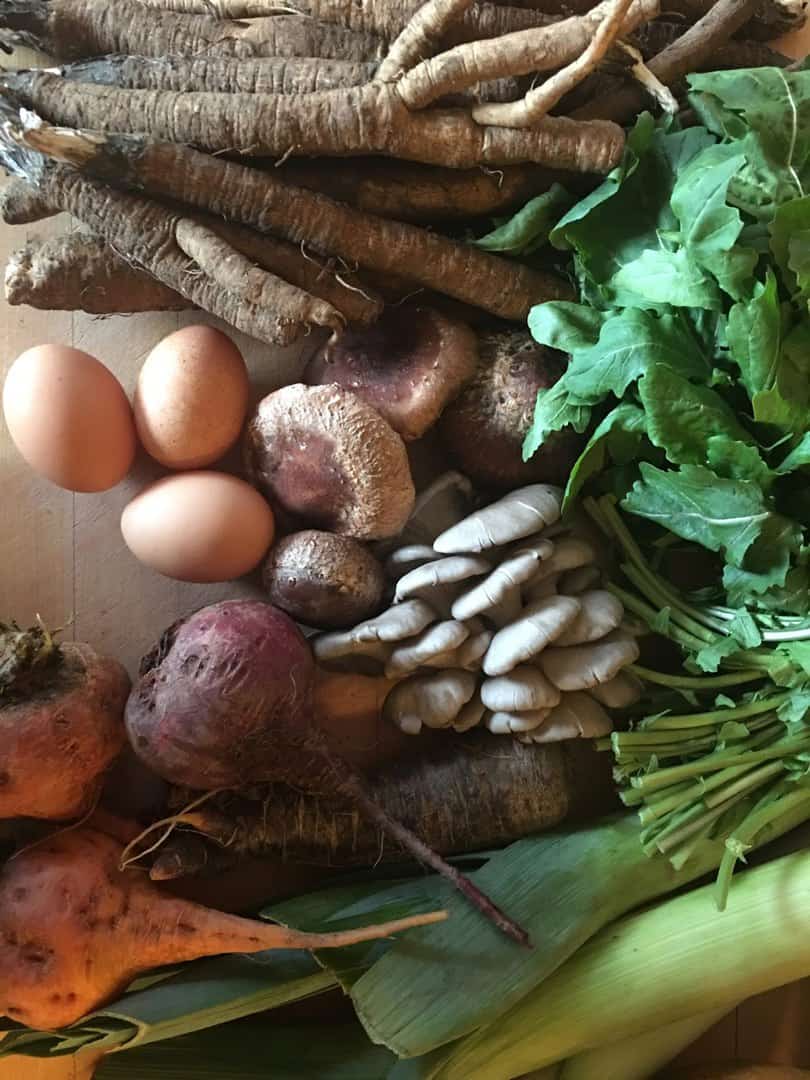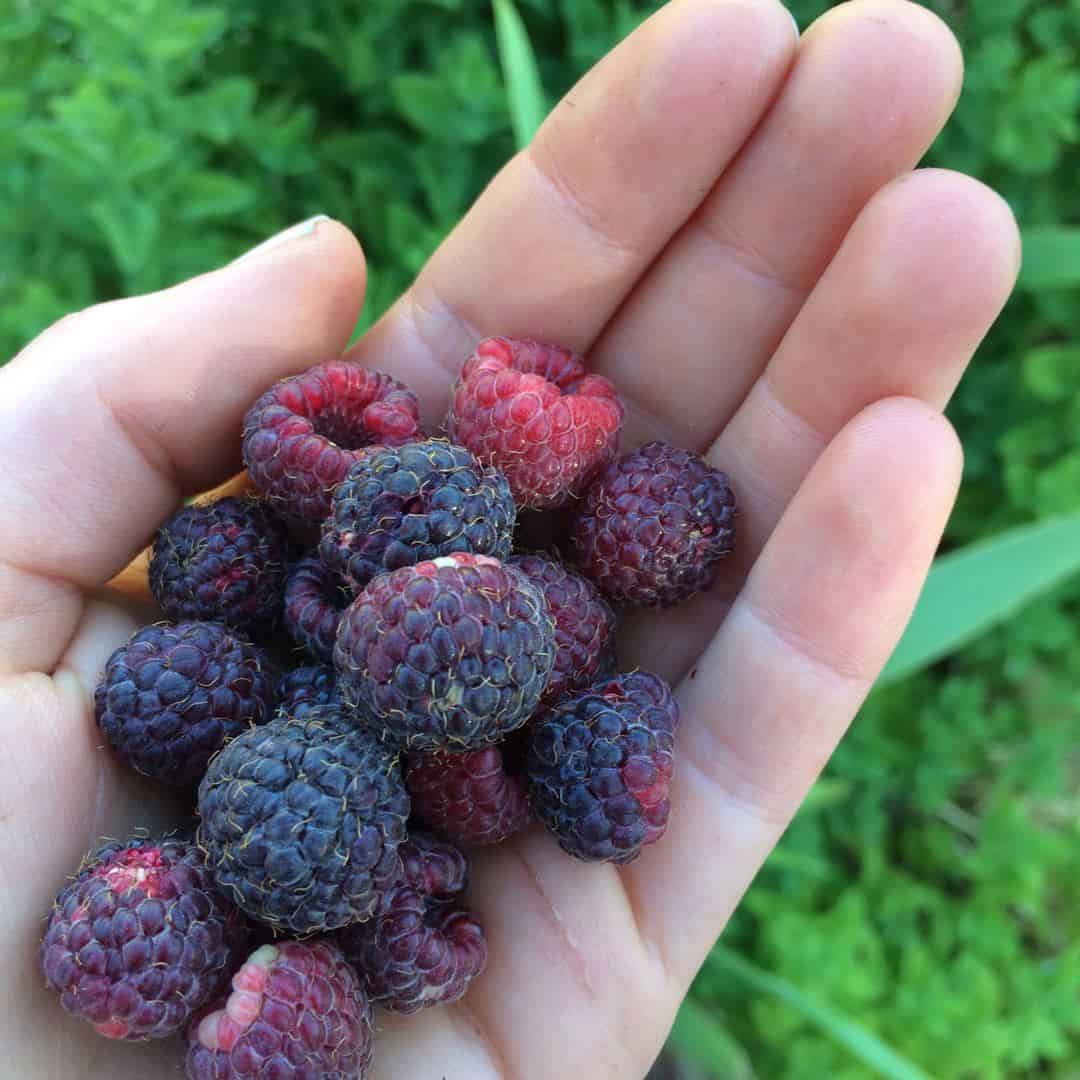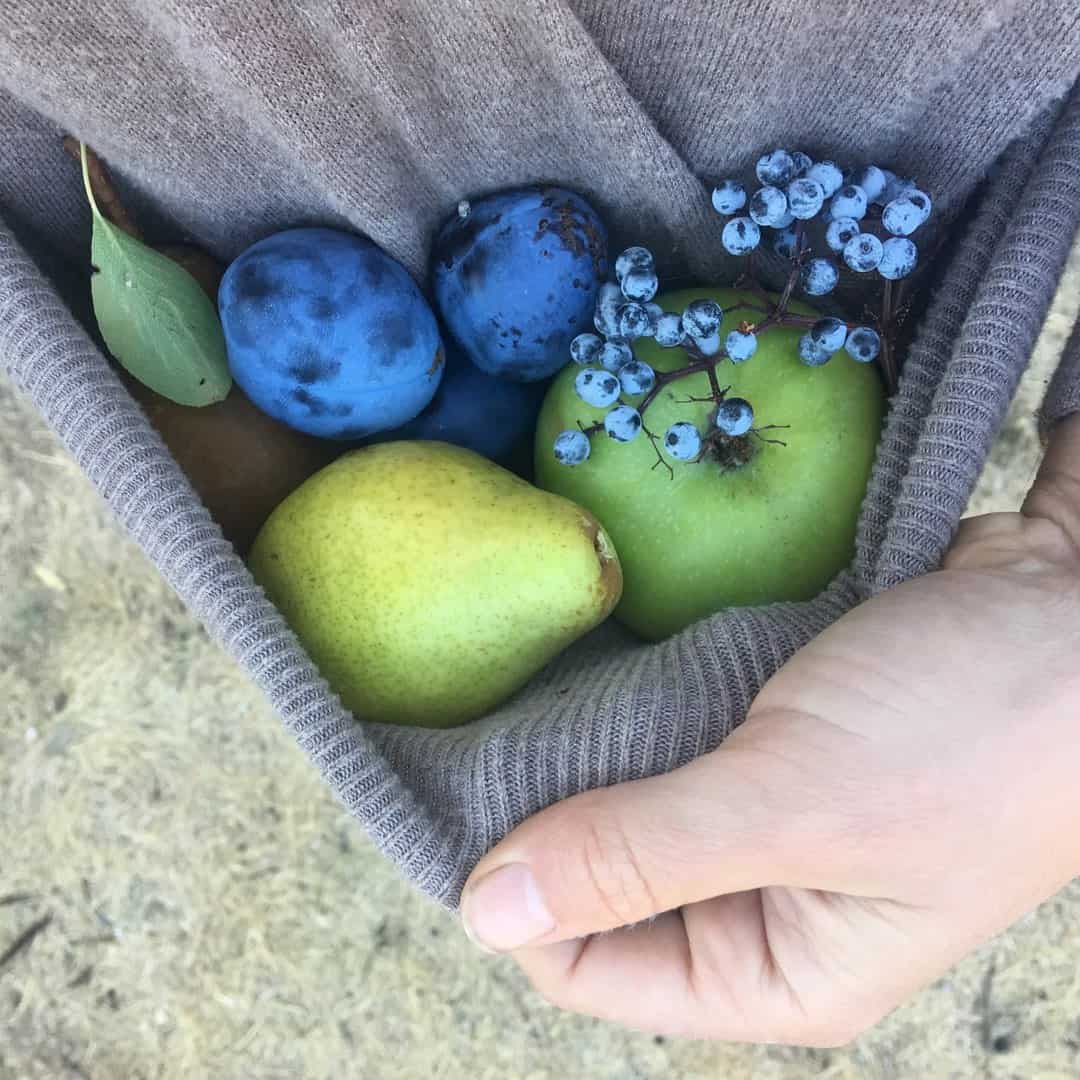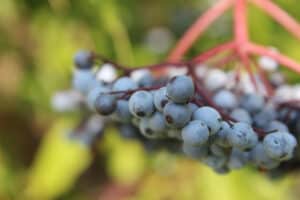As Ayurveda has become popular, interest in eating according to your constitutional type has grown. Over the last few years we’ve seen this dynamic of eating and tailoring your diet to specifically suit your unique dosha.
And while I think there are some great aspects to that, I also think there are a few risks in terms of how we approach food, how we approach eating, the state of our mind, how we think about our food, and how sometimes we can turn food into a stressor.
In this post below, some of the topics you’ll discover are:
- The Origins of the Ayurvedic Diet
- Qualities of the Doshas
- Enjoying Our Food
- Listen to Your Body and the Seasons
- A Real-Food Diet
Table of Contents
The Origins of the Ayurvedic Diet
Every herbalist should have at least a little rudimentary knowledge around diet and nutrition incorporated into their practice of working with people. The food conversation is important and it has a lot of different dynamics. There’s a lot of ways food can taste amazing, while also being healthy and restorative, and as some would say, food is medicine. But unfortunately, the flip side is also true. Food can also be detrimental to one’s health, depending on what food is consumed and when it’s eaten.
As Ayurveda has become popular, interest in eating according to your constitutional type has grown. Over the last few years, we’ve seen this dynamic of eating and tailoring your diet to specifically suit your unique dosha. And while I think there are some great aspects to that, I also think there are a few risks in terms of how we approach food, how we approach eating, the state of our mind, how we think about our food, and how sometimes we can turn food into a stressor. If we’re stressed out about our food or getting too rigid with how we approach the food – this can be detrimental to our health. So I want to talk about the constitutional effects of food and where that line is—and offer a few great things to consider and offer an approach where we can avoid getting maybe even a little neurotic about it.
The Ayurvedic diet is where people eat according to their dosha. For those of you not familiar with this term, the doshas is rooted in a threefold pattern of energetics, based on the doshas, which are formed through particular combinations of the Elements. Air and Ether form the vata dosha, Fire and Air create the pitta dosha, and Earth and Water generate the kapha dosha. Eating according to a particular dosha seems to be more of a modern idea, from what I’ve learned from one of my mentors, Todd Caldicot. He said that traditionally Ayurveda was medicine for peasants. They didn’t live in our culture where we have lots of options to pick and choose what to eat and what not to eat. Peasants had their crops and their staple foods, and what they had was just what they ate. So this idea of eating according to your Dosha, is more of a modern phenomenon- which doesn’t make it invalid, it’s just a result of living in our abundant Western world today.

Qualities of the Doshas
Let’s take a look at the pitta vata constitution. If you remember the qualities of the doshas, it helps with food selection. So pitta is hot, is oily in terms of dampness, and tends to be light. Vata tends to be cold, tends to be dry, and also tends to be light. So what they both have in common are lightness and movement, and that commonality helps determine the most important attribute for balancing that kind of constitution, which is the earth element. I would define this as sweet foods—not sweet like candy but sweet like starches—as well as protein-dense foods. A lot of protein is good for pittas because they’re fiery and they tend to burn through things very quickly, so protein is great because it tends to ground these people out.
The one thing that tends to imbalance pitta is really hot, spicy foods, and the other is oily foods. Now, oils are great, and we need to eat good-quality oils for the integrity of good health, but in this case, I’m referring to more refined oils like polyunsaturated or trans fats. Fried food is also going to aggravate pitta because it’s been submerged in boiling hot oil, which in turn will aggravate pitta. So spicy foods and fried foods are not going to be the best diet for a pitta constitution. A common example for people with a lot of pitta in their constitution who eat fried foods will tend to get acne.
Vata does not do well with cold or very dry foods. So things like dehydrated crackers or jerky or dried nuts and seeds tend to be aggravating to this dosha, as well as cold raw or uncooked foods. Any kind of vegetables or fruit that is cold or uncooked tends to be aggravating to vata. This is why Chinese people cringe when they see someone that has a thin, slender, vata-type constitution on a raw-food diet. It’s the worst possible diet for that constitution to be on because it’s all cold and it doesn’t provide the type of nourishment this dosha needs. Vata benefits from warming, oily foods, and more nourishing foods like soups and stews or in other words, well-cooked, easy-to-digest, grounding foods.
So what happens if someone has both doshas in their constitution? This where it can become confusing for a lot of practitioners. Pitta is hot and vata is cold. Pitta needs cooling foods and vata needs warming foods. So how do we figure that out? Well, it really depends on which one’s most predominant. Usually, you’ll know if you tend to be a little more pitta or a little more vata in terms of temperature, so if you tend to be more on the pitta side and you’ll be hotter, which means you’ll want to avoid the really spicy foods and eat things that will cool down the pitta, but don’t eat really cold foods as that will aggravate the vata. For example; if you tend to be colder, eat warming foods but don’t do the fire-breathing dragon hot sauce that’s going to aggravate your pitta. Do the gentle warmings spices like Cumin and maybe a little Black pepper or maybe a wee little bit of Ginger—gentle warming things that will warm up that vata but not so much that it’s going to aggravate the pitta.

Enjoying Our Food
One thing that I’d like to warn you about is that it’s easy for people to get really neurotic about these categories. I think sometimes people get a little too strict and stringent where they say they can’t eat something because it aggravates their pitta, or they can’t eat something else because aggravates their kapha. But then they wonder what they can eat, and become a bit paralyzed, causing themselves more stress about their diet, which in turn makes things worse, because they’re not even enjoying their food.
True, some foods are good for our bodies, and some foods aren’t so good for our bodies. But food is also about enjoying ourselves and eating things in moderation and also knowing when it’s okay to treat yourself once in a while. Because there is an aspect of sensory enjoyment with food and there’s an aspect of a community gathering around food and eating to uplift our spirits. It’s important to have fun around diet and cook meals together, to share the bounty of a fall harvest – or enjoy an ice cream with your kid! I want to encourage you to enjoy your meals no matter what diet you follow – even if you slip every so often, ‘cause being happy, to me, is better than stressing over something that isn’t a true detriment to our health.
Listening to Your Body
Now, some people have allergies and severe intolerances and they shouldn’t eat certain items because their body doesn’t react to it well. But when it comes to the constitutional vantage and eating for your dosha, I think it’s good to be aware, but it’s good to also be flexible and not get too rigid and not put yourself in a box or limit yourself too much, because then it becomes more the mind imposing on the body.
The most important thing is to listen to your body. Eat food and see how you feel when you eat it. Eat the fire-breathing dragon hot sauce, and you might say, “Oh, interesting. I just got heartburn from that. It just aggravated my pitta. Maybe I need to eat some less spicy.” Or, “Oh, I ate that raw, cold salad, and now I feel really cold and really tense and nervous. That aggravated my vata. But hold on – I really enjoy salads.” So maybe instead you can find a balance, roast a bunch of root veggies and put that on top of your salad, which would add some warmth to your meal. Maybe you love certain crackers, but you think it’s too dry, so eat them with some oily hummus or with some smoked salmon or cheese. Now you’ve got oiliness that’s going to balance that dryness. Or you could even drink a bunch of water with it to balance it out. There are ways to navigate this so that you can still enjoy your food but you’re also keeping tabs on how you are reacting and responding to the foods that may aggravate parts of you. This way it becomes an art, and not something that confines you.
Listening to the Seasons & Tuning Your Senses
The other part of this is that there are seasonal attributes that are important to follow. In the summer you’re going to tend toward pitta imbalances because it’s hot. In the winter and fall, you’re going to be more prone to the vata/kapha imbalances. So there’s something about eating with the seasons that can help us stay balanced. Adjusting your diet to eat in a way that counteracts what’s going on seasonally, will instill a sense of equilibrium. Eating those nice, warm stews during a cold winter feels good because it’s warming your body, or eating a cool salad with cucumbers on a hot summer day will cool you down. It’s keeping you in check with your ecosystem and the environment surrounding you.
It’s good to have a genuine sense of how foods affect your constitution, I just want to caution you not to get too rigid with this. Yes, there are all kinds of charts and diagrams that say to eat certain foods for the doshas, but you can use them as a general guideline, and a way to navigate your health -but not miss out on the celebration of life through food.
So listen to your body and listen to your body’s wisdom. Your body is the most important communicator of all and tells you more than any book could. And ultimately enjoy your food. I’ve been learning this myself, I used to be a strict vegetarian for a long time, then went vegan, and then was a raw vegan. But now, after many years, I’ve flipped the coin again, and now I’m a carnivore. Thankfully, I’ve gotten to a place where I enjoy my food, and I enjoy organic cashew butter cups once in a while too! Sure, I’m not going to eat them every day, but I eat to make myself feel healthy and happy, and I think part of the medicine of food is simply enjoying it.

A Real-Food Diet
There are a lot of food ideas out there and everyone’s got the miracle diet. “This is the diet humans should eat.” “No, this is the diet humans should eat.” “No, that’s the diet humans should eat.” It just makes it confusing for everyone. I say, how about we just eat real food, like fruits and vegetables and meats and legumes and grains. And yes maybe for some people, legumes or grains don’t digest well, so don’t eat those, but just focus on eating a real-food diet.
Ultimately eat the food that you want to eat, and pay attention to how those foods affect your body. If you eat something that doesn’t feel good in your body, don’t eat it. Sometimes it sucks, but thats how we tune in to ourselves and listen. It’s more empowering for us as human beings to have a relationship with our food, and have some understanding of our food and our environment affects us. That, to me, is empowerment. It’s not empowering to have someone tell you what foods to eat or tell you what diet is best for you, they’re not you – so they don’t know how you feel in your body.
I encourage my clients and my students to figure out the food issue for themselves because that’s empowering, that’s self-knowledge and self-understanding. To me, that is self-improvement, that is personal growth and development, and that’s what spiritual growth and development are—to understand how the outside affects the inside.







